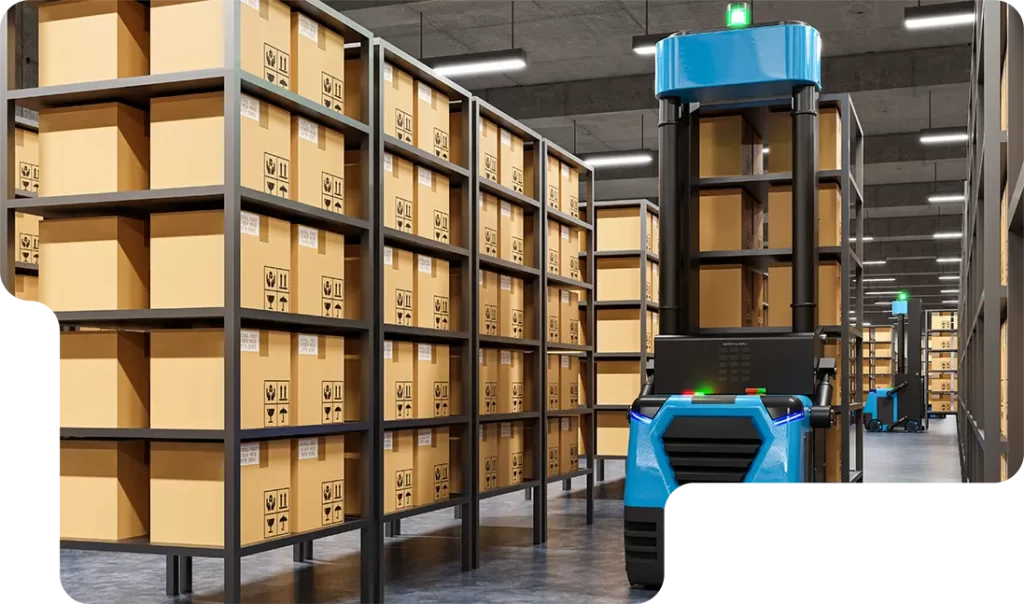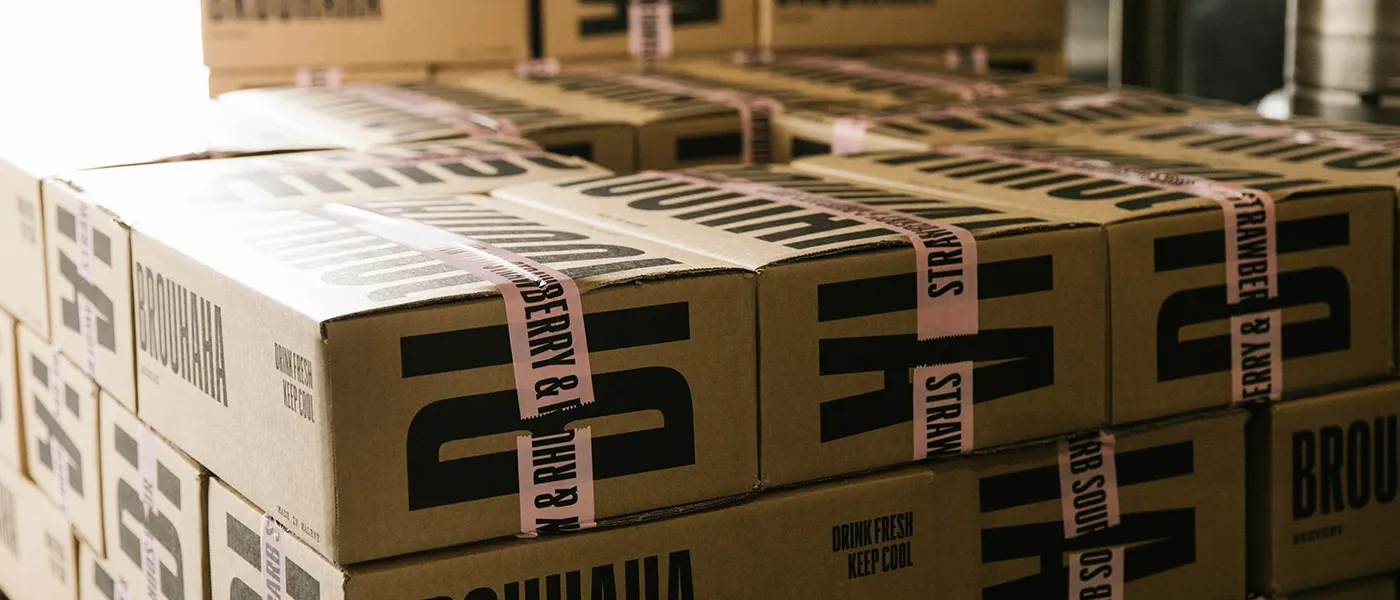Introduction to Distribution
The ability to deliver goods to various customers makes distribution one of the most crucial elements of a product-based firm. Choosing the best distribution plan becomes a critical choice that might impact your company’s operations.
What is Distribution?
Distribution is the skillfully managed transfer of products from the supplier or manufacturer to business-to-business (B2B) clients and consumers. Distribution is the path that manufacturers use to move their product from the source of product to the destination for customers to buy. This process also includes the procurement of raw materials by the factory to keep the supply chain up and running.
The core procurement and distribution team is often in charge of overseeing the supply chain activities. These include, online presence, supply chain management, transport, atmosphere, inventory control to ensure production and distribution remain functional.
Importance of Distribution
A business cannot guarantee the most excellent service without a distribution function that monitors and enhances the interaction between manufacturers and customers. If there are distribution constraints, supplies are delayed, consumers, retailers, and manufacturers become irritated, and trust is broken. Businesses must develop a constant feedback loop for product distribution to ensure that everyone is satisfied with the procedure and that they can make any changes.
Since dropshipping and online shopping involve no in-person product testing, buyers and merchants must rely on the accuracy of the images and descriptions to guide their decisions. This implies that the distribution platform must effectively spread responses throughout the channel.
What are the Functions of Distribution?
Proper distribution of necessary goods and services to the consumers at the right time satisfies their demand and also changes their living standards. Distribution improves the consumer’s standard of living through employment, increase in income, and transfer of ownership. Hence, it brings a positive effect on society.

Basic Elements of Distribution
Primary distribution consists of two parts. They are physical distribution and distribution channels.
Physical distribution:
Physical distribution encompasses all activities related to the efficient transport of goods from the point of manufacture to the consumer’s end. Physical distribution entails the movement of raw materials, manufactured parts, supplies, and finished goods from manufacturers to consumers through intermediaries. It is the practice of strategically monitoring the flow of materials, technologies, and final products from suppliers, corporate establishments, and consumers.
The related activities that make up physical distribution include order processing, marketing forecasts, customer services, transport, storage, logistics, packaging, inventory tracking, and the location of plants and warehouses. These responsibilities are classified into three categories: order processing, marketing forecasting, and customer service.
Distribution channel:
A distribution channel is an organized network or system of institutions and agencies that carry out all the tasks necessary to connect manufacturers and complete the marketing mission.
In other words, it refers to the course or route a product takes as it travels from a manufacturer to the end consumer or industrial users, whether that transfer can either be direct or indirect. Consequently, a distribution channel is a route that allows goods and services to be transported from suppliers to customers while achieving both parties’ goals.
What is the Nature of Distribution?
In a distribution agreement, the distributor purchases products from a manufacturer and redistributes them for its own benefit.
What is the Structure of Distribution?
The distribution channel determines how the products are delivered from the manufacturer to the final customer. There can be different levels in the channel construction. Wholesalers, distributors, dealers, stockists, and retailers are a few examples of the numerous channel partners, each with a unique set of tasks and methods of operation.
The distribution channel’s structure is determined by the type of goods, standard business processes, and corporate priorities. Various businesses select mixes of these channel partners depending on their needs. Some of the popular channel partners include wholesalers, retailers, and direct-to-consumer sales.
A company’s global emphasis strategy can help it establish an interconnected network that spans continents or nations separated into smaller geographic units like states, districts, etc. Based on the market dynamics, the distribution channels’ structure may change.
What are the Levels of Distribution?
The business flow between a producer and a customer is referred to as a distribution channel. And these flows may have levels of intermediaries between them like distributors who deliver and store goods for manufacturers to sell to retailers. These channels might range from simple to progressively complicated.
There are direct and indirect channels. The manufacturer communicates directly with the customer through a direct channel.
In contrast, an indirect route involves intermediaries through into sales flow.
The communication between consumers and manufacturers is divided into four levels, such as:
Level Zero: The most direct distribution channel is level zero. No intermediary is involved; sales are made directly to consumers from manufacturers.
Level One: One middleman is the link between the manufacturer and the user in a level one channel. An example is a retailer who stands between a manufacturer and a customer.
Level Two: When considering levels, relate the quantity to the number of intermediaries. A level two channel, in this situation, places two intermediaries between the producer and the consumer.
Level Three: A level three channel, places three intermediaries between the producer and the consumer. An agent can help in this situation. Agents represent businesses and primarily work with wholesalers. Wholesalers then sell to merchants, who in turn sell to customers.
Difference between Logistics and Distribution
Before addressing the difference between logistics and distribution, we must first examine the definition of each term separately.
What is distribution?
Distribution is also known as the transfer of products from the producer to the supplier.
Distribution operations involve a wide range of procedures or actions. The methods could include logistics, distribution network, inventories, storage, and packing.
What is logistics?
Logistics refers to managing the flow of goods or services from the point of origin to the final destination. The logistics will begin at the manufacturing stage and continue through the distribution and delivery. Information flow, production, packing, warehousing, and security considerations are integrated. Automated inventory management is in place.
Key differences between logistics and distribution
- Logistics deals with the overall strategy of moving goods from the point of origin to the final consumer. Distribution could be seen as a subset of logistics. The main aim of distribution is to ensure that the goods are delivered promptly without delays or huge expenses.
- Logistics is intended to improve the existing distribution networks. Businesses should note that logistics will start when the commodities are still raw materials and extend through the actual transit stage until they are delivered to their final destination.
- The primary distinction between distribution is that logistics is concerned with the entire planning and coordination of products transportation, warehousing, and stock management. In contrast, distribution is affected by the physical placement of items.
- Logistics and distribution are significant elements of efficiently delivering commodities from one point to another. Both of these aspects are often associated with storage, inventory control, and monitoring of the flow of products before transfer.

Direct Vs. Indirect Distribution
Direct distribution:
A direct distribution channel is organized and managed by a company that sells directly to consumers. In this instance, the company handles all parts of delivery in-house and is exclusively responsible for guaranteeing that the client receives their products.
Direct channels necessitate more effort and are more costly to set up. Businesses must implement all warehouses, logistics networks, trucks, and service personnel. However, the direct method is considerably shorter, less complicated, and less expensive than an indirect channel.
Manufacturers have more influence over how products are distributed when they manage every component of the distribution system. They have the power to provide new services, remove inefficiencies, and establish prices.
Indirect distribution:
In an indirect distribution channel, intermediaries perform the distribution functions of a business. Indirect distribution relieves the manufacturer of certain initial expenses and duties, reducing the time required to run the business.
Furthermore, an indirect distribution route might be considerably easier to operate than a direct distribution network with the correct vendor relationships. It can provide a business with much-needed support and distribution experience that the company may lack.
Although indirect distribution can reduce costs for the consumer, delay deliveries, and remove control from the producer, it can also introduce new levels of fees and bureaucracy.
Key differences
- A direct distribution channel allows a business to sell its goods directly to customers. A channel that is indirect subcontracts the distribution of those goods to several delivery intermediaries.
- Any business with clients should aim to supply products in a way that benefits both the client and the industry. Remember that the distribution channel should ideally serve a business’s sales objectives and create customer value.
Distribution Channels
Distributors, retailers, and direct-to-consumer sales are the three categories of distribution channels.
Wholesalers are intermediary companies that buy large quantities of goods from manufacturers and resell them to retailers or, occasionally, to the final customers.
Retailers provide high-touch service to end users and are typically wholesalers’ clients.
Finally, direct-to-consumer sales occur when the manufacturer conducts business with the buyer directly, such as when an e-commerce platform is used.
What is a Distribution Center?
A distribution center is a specialized facility that functions as a hub for strategically storing finished items, streamlining the selection and packaging process, and shipping goods to another site or final destination. Distribution centers, which are frequently synonymous with the word fulfillment center, manage order fulfillment and additional value-added operations.
Warehouse Vs. Distribution Center
The contrasts between conventional warehouses and distribution centers have become increasingly evident as supply networks have changed and become much more sophisticated than in the past. Some may argue that the differences are merely technical and that there are no fundamental changes; however, this is incorrect.
Warehouses and distribution centers have distinct characteristics. Yes, they are both used for processing, holding, organizing, hauling, and distributing items; however, there is much more to them.
Here are some essential differences between the two:
- The fundamental purpose of warehouses is to hold goods until they are required. Product storage, blending, cross-docking, order processing, and packing are all done in a distribution hub.
- Warehouses provide longer-term product storage. However, the flow rate from warehouses to the retailer or consumer is faster in distribution facilities. Products now spend less time in stores waiting to be sold.
- Distribution centers are seen as the link between the suppliers and consumers since they are where goods are packaged and transported. The warehouse’s function is far more centered on storing the goods than serving the customers.
- A distribution center, not a warehouse, frequently processes orders for stores and warehouses. This is so because distribution centers often service clients better than warehouses do.
- Compared to distribution centers, warehouse management is more straightforward. A distribution center coordinates order fulfillment, transport, stock, warehouse management, and other tasks, whereas warehouses do fewer of these tasks.
Both still exist as crucial links in the supply chain. It is typical to discover warehouses and distribution facilities to meet seasonal demands because long- and short-term storage is necessary.
What is Wholesale Distribution?
Wholesale distribution or wholesaling refers to selling goods and products to corporate, commercial, governmental, or professional corporate customers, retailers, and other wholesalers.
A wholesale distribution firm is a corporation or a collection of individuals—better known as the wholesale distributor—that purchases goods in large quantities from manufacturers with the sole purpose of redistributing them, most frequently to retailers. The producer, the wholesaler, and the retailers all play crucial roles in a wholesale distribution business’ supply chain to keep the system flowing.

How Does Wholesale Distribution Work?
Wholesale distributors are in charge of purchasing products, storing them, prepping them for sale to their clients in smaller amounts, and finally distributing them.
Building excellent relations with suppliers, optimizing operational efficiency, and having a solid understanding of client needs, market trends, expenses, and pricing points are all essential for success in wholesale distribution.
Wholesale distributors must have strong upstream connections with the producers or suppliers of the products they purchase in large quantities. Additionally, they must establish dependable relationships with their downstream clients, retailers, or businesses like contractors, hospitals, or restaurants.
Wholesalers occasionally act as dropshipping suppliers for traditional and online shops. The shop doesn’t have a stock of the goods it sells to clients in a dropshipping agreement. Instead, after receiving payment, the merchant sends the purchase to the distributor, who then ships the item to the client.
What is Warehouse Distribution?
Warehouse distribution is critical to the supply chain since it stores the product between its arrival from its origin and delivery to a client or retail outlet.
In simple terms, a distribution warehouse is a type of warehouse that serves items at the end of the chain of supply. A distribution warehouse is where things that have already been created and are ready to be delivered to merchants can be found. The majority of distribution facilities are linked to certain distributors for specific items.
Understanding Distribution Management
Monitoring the transfer of finished products from a manufacturer or supplier to the final consumer is referred to as distribution management.
Storage, inventory control, picking and packaging in the warehouse, and last-mile delivery are just a few of the actions and procedures during this process.
Effective distribution management can improve customer satisfaction by enhancing order processing, inventory turnover ratio, profitability, and strategic flexibility.
Distribution Management: Why is It Important for E-Commerce?
The purpose of distribution management is to maintain inventories flowing through the supply network. Implementing distribution management successfully directly impacts the rate of growth and the profit margins of a brand.
For example, you may have amassed excessive deadstock if you overspend on stockpiling. Alternatively, if you are not replacing inventory quickly enough, it might result in missed revenue, excess inventory, and overstocking.
When done correctly, distribution management is among the best strategies to ensure:
- Inventory is delivered efficiently to reach clients as quickly and efficiently as possible.
- There is adequate stock to satisfy the demands while minimizing storage expenses.
- Business owners have sufficient insight into activities to make informed choices and improvements.
Supply Chain Distribution
The company’s financial and operational objectives influence the supply chain distribution process. Some businesses sell directly to customers, while others employ third-party distributions. You should establish your supply chain management through an orderly plan.
Businesses must evaluate the distribution choices and select the best alternative for their target consumers and product line. Formal distribution strategies shorten the time it takes for a consumer order to be delivered. Supply chain distribution is employed to balance market forces. Your distribution strategy should be adaptable to market changes.
3PL Distribution
When an online retailer contracts a third-party logistics provider to handle order processing, fulfillment, and shipment, this is called 3PL distribution.
Your 3PL partner manages all distribution logistics tasks in 3PL distribution, such as:
- Sourcing
- Receiving, storing, and labeling inventory
- Picking and Packing
- Assembling (when necessary)
- Organizing delivery to the last mile or shipment
- Logistics in reverse and returns
A 3PL may carry out these tasks for an e-commerce business in a single warehouse facility or fulfillment center or use several fulfillment centers spread out over several regions.

Advantages of Using 3PL Distribution
Cost reduction:
By utilizing their combined volume and order frequency, 3PL companies may negotiate better rates with carriers than individual shippers because they can operate on behalf of numerous customers. Using a company to handle part of your logistical needs also allows businesses the freedom to allocate funds to other crucial aspects of the company.
Instantly increases your knowledge and competence in the field:
If you are just starting, logistics can be a complex and essential step; therefore, getting advice from a company specializing in this field may be crucial. Engaging specialists can enhance and direct the performance of your logistics operation, allowing you to concentrate on other aspects of your organization.
Resource network:
The fact that third-party logistics services have a broad resource network is another crucial benefit. When used effectively, this can assist in carrying out each step in the distribution chain as efficiently as possible.
Major 3PLs have a sizable network of connected routes that allow them to carry their clients’ freight as efficiently as possible. They effectively utilize this network and are well-versed in alternate ways and fixes for unforeseen problems.
Scalability:
The ability to provide organizations with the scalability and flexibility to utilize assets based on the current business demands is a crucial benefit of third-party logistics providers. In other words, working with a 3PL makes it simpler to manage the high or low seasons because they can assist you in quickly adapting to variations in demand. Without taking on additional risk or work, they can also expand resources like transportation, workforce, or space based on inventory needs.
Partnering with a 3PL allows firms to expand without restrictions into new areas. A 3PL’s logistics assistance and industry knowledge benefit those trying to grow to recent locations, locally or worldwide.
Customer satisfaction:
All the above benefits come down to better services, which directly translates to higher customer satisfaction—one of any business’s most crucial objectives.
A good 3PL can guarantee prompt order pickups and deliveries, qualified drivers, and, ultimately, satisfied customers. By doing this, shippers prevent supplier refunds and schedule alterations, improving the effectiveness of the transportation process.
What is Direct Distribution?
A manufacturer or supplier sends their goods straight to the customer using the direct distribution technique. Since businesses typically prepare and sell the items directly, using this kind of distribution rarely involves the employment of intermediaries or other distributors. Because they may sell a product via their websites and in-store flyers, this distribution could also help businesses improve income and reduce out-of-pocket spending for marketing agencies.
Distribution Strategies Used in Supply Chain Management
Direct and indirect distribution strategies are the two main varieties, and depending on the good or service, each one provides a company with distinct advantages and cost savings.
An explanation of direct and indirect distribution strategies is provided below:
Direct distribution strategy: Direct distribution is the practice of manufacturers sending their goods directly to customers without the assistance of intermediaries. Having a storehouse to keep the goods and a delivery system to convey them to the clients is frequently necessary.
Indirect distribution strategy: The employment of intermediary businesses and institutions by producers to assist in the logistical delivery of goods to customers is known as an indirect distribution strategy. It can help a business save money by producing vast quantities of routine products more efficiently.
Wholesaler Vs. Distributor
A trader known as a wholesaler buys goods in large quantities and sells them in smaller ones. On the other hand, distributors are businesses that supply goods in a particular region or market.
The following factors distinguish a wholesaler and a distributor clear:
- A wholesaler is a person or organization that buys items in large quantities and resells them in small amounts. On the other hand, the distributor is a crucial link in the chain that provides goods or services to the marketplace.
- Distributors typically enter contracts with manufacturers to deal in non-competing items or product offerings. On the other hand, a wholesaler does not engage in an agreement with the manufacturer; therefore, he is free to sell competitive items to the retailer from multiple producers.
- There are four distribution levels, with wholesalers in the two and three-level channels. In contrast, the distributor is only involved in the three-level distribution chain.
- A distributor’s activity area is more significant than that of a wholesaler since he operates as an intermediary to supply certain commodities in the market.
- A wholesaler’s only customers are retailers. On the other hand, a distributor provides items to various parts of the supply chain, including wholesalers, merchants, and even direct customers.
- Wholesalers do not advertise, promote, or sell products to potential customers or retailers; instead, they wait for the retailer to express interest in a product and place an order. As a result, they serve as the manufacturer’s sales agent. In contrast, the distributor negotiates a contract with the producer and participates in marketing campaigns to boost sales.
Distribution Optimization
Even the most successful businesses may find it challenging to manage their distribution channels. That’s due to many factors to consider, especially in this day of technology and social media. An inadequate marketing strategy and even higher bills can result from failing to have a sound system to handle these channels.
Distribution can be optimized and further improved upon through the following steps which exist to improve channel effectiveness:
- Increasing or choosing the channel intermediates with care
- Putting more emphasis on managing the supply chain
- Combining all channels into one powerful channel
Conclusion
Irrespective of the market a business depends on, distribution is crucial. For a business to be successful, sellers must deliver products or services to the customer through predetermined routes that guarantee a steady, efficient flow of these products.
A marketer must be familiar with various channels, choose the best ones for the products they sell, and ensure that their marketing choices are supported by the technical features of each of the preferred networks and the best delivery strategies.
FAQs
Is distribution part of the supply chain?
Yes, distribution is a part of the supply chain. Other supply chain components include retailers, transportation companies, manufacturers, and distribution centers.
What are the three methods of distribution in a supply chain?
Wholesalers, retailers, and direct-to-consumer sales are the three different categories of distribution channels.
What is distribution in the supply chain?
Distribution is the process of moving and storing a product through the supply chain from the producer stage to the customer stage. While finished goods are transported from the producer to the end user, raw materials are transported from suppliers to manufacturers. Every pair of levels of the supply chain have distribution in between them.
What is the difference between a distributor and a wholesaler?
A wholesaler purchases products in mass and resells them to the retailers. A distributor is engaged in a supply chain network for distributing products and services to the business and customers.
What do distributors do?
A distributor purchases products from a producer and sells them to customers, occasionally via storefronts in the distribution network. Distributors can sell products directly to customers or other businesses, depending on the good or service.
How does the wholesale distribution model work?
A wholesaler purchases products from a producer and then sell the goods to merchants and other companies under a model of wholesale distribution. A vital link in this system is the wholesaler. To relieve the manufacturer of this burden, wholesalers handle the storage and distribution of the products to shops and other enterprises.
How does efficient distribution management help?
By accelerating order fulfillment and distribution, efficient distribution management can aid you in reliably exceeding such expectations. Additionally, it reduces expenses and time expended by promptly acting on seasonality in the market and boosting profit margins through analyzing distribution management data.
How is distribution management beneficial to businesses?
The capacity of a business to sell and distribute its products swiftly and effectively impacts both corporate sales and continuous profitability, making distribution management a crucial component of the economic cycle for both wholesalers and distributors.
What role does distribution strategy play?
By improving consumer interactions with your business, distribution strategy improves customer experience and repeat sales. Additionally, it might assist you in streamlining your company to increase efficiency.
How crucial is distribution management to a company?
Customer satisfaction rises as a result of effective distribution management, which also lowers shipment costs and delivery times.







